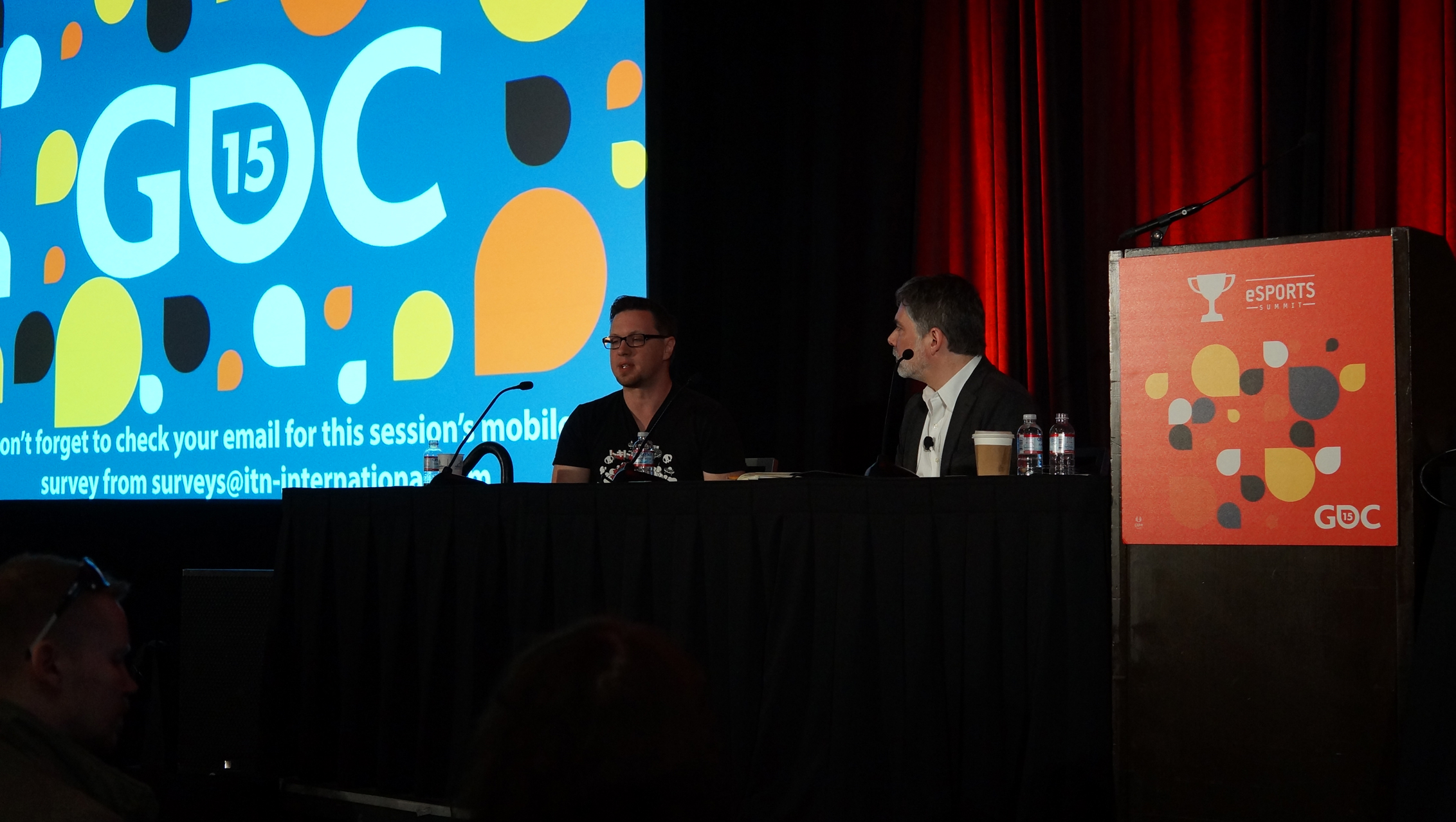LoL's Morello: design for depth first, accessibility later

League of Legends is the most-played game in the world. It’s also, like Dota 2 and other lane-pushers, incredibly deep, with more than a hundred champions and layers upon layers of systems and strategy. The common wisdom is that lane-pushers are so complicated, they’re often intimidating and drive away potential new players. At a GDC 2015 talk on Tuesday, Riot Games’ lead designer Ryan “Morello” Scott had an interesting take on that common wisdom. Short version: he thinks it’s wrong.
“I feel that paradox [between complexity and accessibility] exists, I think the way we analyze it in this industry is intuitive, but I don’t think it’s correct,” Scott said. “Let’s think about games that are really culturally relevant to us as gamers. That we talk about 10 years later, we talk about them as big pieces of what we’re thinking about. Counter-Strike. Starcraft. Halo series. Games like this. These games all have depth depending on what you want in a game...that’s what makes popular games. All those games require mastery.
“Our assumption from the get-go is that players desire mastery. It’s one of our core pillars of League of Legends and Riot in general. With that, we think the paradox is actually: if you try to make your game broadly appealing first, and then make it deep, you fail. Because you’re building on a weak foundation. There’s nothing to hold up the house. Accessibility’s great, but it can’t be the foundation of your game. If you build depth first, and make a game that’s rich in decision making, highly challenging, lets you master things over tens or hundreds or thousands of hours, then go, ‘okay, we’ve made it, great. Now how do we make it so it’s more [approachable?]’
“I think those games, in the long-term, are much more popular...There are people here still playing Counter-Strike. That game is 16 years old. It’s because the mastery is that rich. That’s how much I think our brains are hardwired to want to learn, to want to overcome. If you deliver that to players in ways that are fun and satisfying, I think it's a mistake to underestimate that people are smart and want to learn. If you assume they don’t, I think that’s underestimating what players are capable of.”

It’s an interesting explanation for why games with especially high skill ceilings—games that reward mastery over a span of months or years—tend to foster passionate communities. Lane-pushers like League of Legends and especially Dota 2 are often criticized for their complexity, but Scott made a thoughtful point about two aspects of MOBA design: complexity and depth. They might sound like the same thing, but he had a good argument for why they’re separate concepts, and why depth is more important than complexity.
“Complexity and depth have a relationship, but they’re not the same thing,” Scott said. “Complexity is a cost, and you try to pay the littlest cost you can in complexity to get the most depth. So if you [say] ‘I want this depth, how do I care that the gameplay systems around the depth are the most understandable versions?’ “
The gameplay mechanic of denying—killing your own minions to rob the enemy team of the experience and gold they’d earn by getting the kills—came up as an example of complexity that didn’t add much depth, which is why Riot removed denying from the game during its beta. Dota 2 players may disagree, but Scott had an argument for denial’s removal.
Keep up to date with the most important stories and the best deals, as picked by the PC Gamer team.
“I think some explanation is important on that,” he said. “It’s kind of like, the analogy I would use is, you want to add skill to the game, you want to make sure skills will be tested. So think about last hitting. You’re trying to manage minions. That’s taking your focus, and while you’re doing that you have an enemy trying to disrupt you. Denying is actually the same skillset you're testing. [Killing] minions, being pressured by an opponent, watching your health, things like that. It double dips into the same skillset.
“So does it create a higher skill ceiling? Yes. But it tests the same skill twice. Is it also superfluous? We thought, yes. It adds complexity, but it adds low depth.…The cost to benefit ratio for how much it adds weight to the game’s back, versus how much more it allows for the mastery of the players is low, so that’s where we started making cuts.”
So, high skill ceilings and games that encourage players to commit hundreds of hours to master them? Great. Except a skill ceiling that’s too high can add messy complexity while gaining minimal depth. As difficult as lane-pushers are to play, designing them is clearly a whole ‘nother level of tricky.

Wes has been covering games and hardware for more than 10 years, first at tech sites like The Wirecutter and Tested before joining the PC Gamer team in 2014. Wes plays a little bit of everything, but he'll always jump at the chance to cover emulation and Japanese games.
When he's not obsessively optimizing and re-optimizing a tangle of conveyor belts in Satisfactory (it's really becoming a problem), he's probably playing a 20-year-old Final Fantasy or some opaque ASCII roguelike. With a focus on writing and editing features, he seeks out personal stories and in-depth histories from the corners of PC gaming and its niche communities. 50% pizza by volume (deep dish, to be specific).

